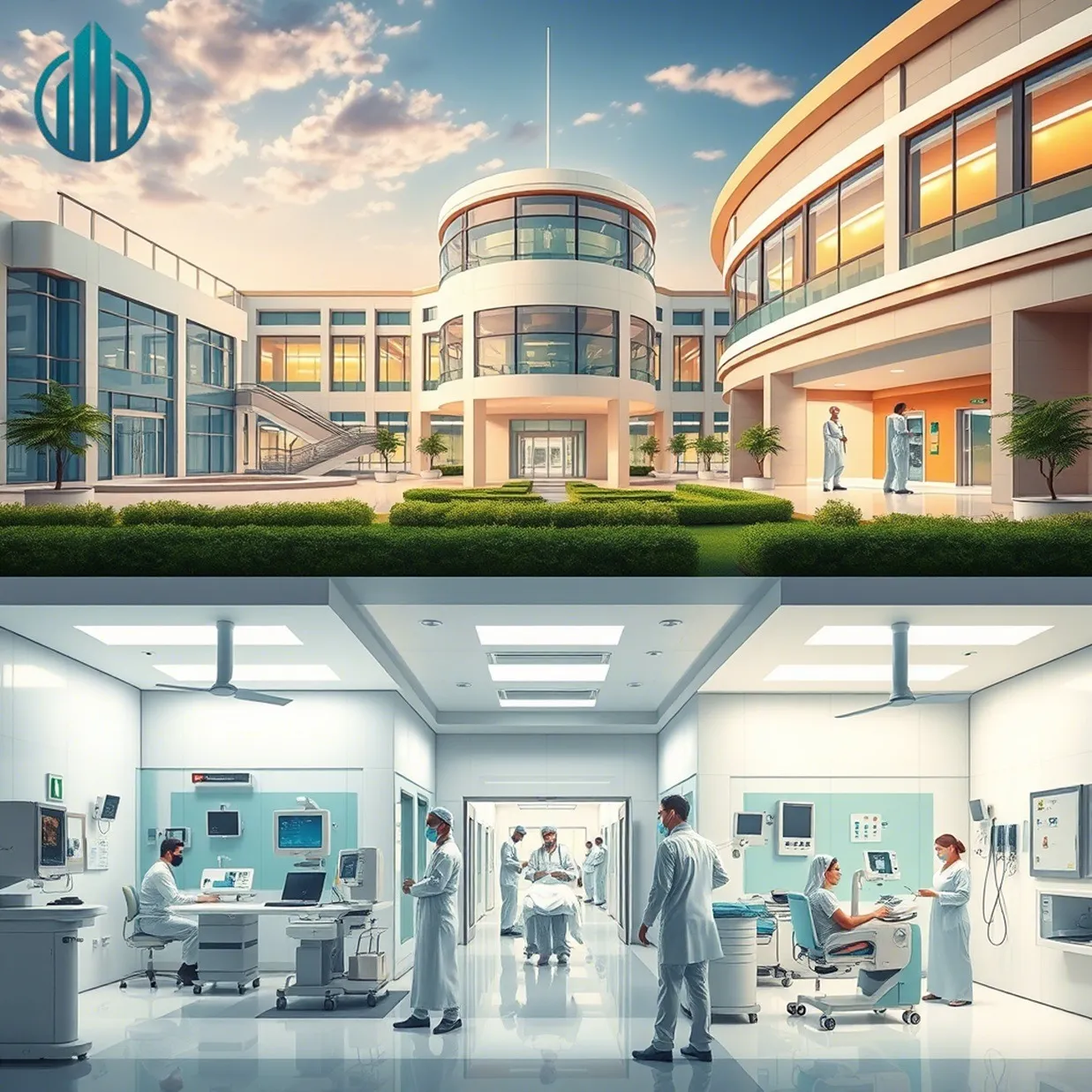
Healthcare facilities present unique challenges and needs due to their critical role in patient care, strict regulatory requirements, and the complex interplay of various systems and equipment. Understanding these specific needs is crucial for effective healthcare facilities management.
This blog post will focus on the essential aspects of healthcare facilities management, providing insights into how to optimize operations, ensure patient safety, and maintain compliance.
What is Healthcare Facilities Management?
Facility management in healthcare sector (HCFM) involves overseeing the operation, maintenance, and safety of healthcare facilities to ensure they provide a safe and efficient environment for patients, staff, and visitors. Managing a healthcare facility involves a wide variety of tasks that protect both people and property while simultaneously providing a welcoming environment for visitors.
The specific goals and priorities within a healthcare setting include:
- Patient Safety: Ensuring a safe environment for patients is paramount.
- Operational Efficiency: Maintaining smooth operations so healthcare teams can focus on patient care.
- Regulatory Compliance: Adhering to stringent healthcare regulations and standards.
- Hospital Facilities Management: Overseeing all aspects of hospital infrastructure, including utilities, space allocation, and support services to ensure seamless operation.
Key Aspects of Healthcare Facility Management
Effective healthcare facility management requires careful attention to several key areas:
- Patient Safety: This is the highest priority, involving measures to prevent infections, accidents, and other hazards.
- Hygiene: Maintaining a sanitary environment to minimize the spread of infections is crucial. Most crews will perform the initial cleaning of communal areas using wet mops or cloths and sprays or solutions that kill bacteria and other germs on hard surfaces, like floors or countertops.
- Compliance with Regulations: Healthcare facilities must adhere to numerous regulations and standards, including those related to safety, waste disposal, and environmental control.
- Proper Resource Allocation: Efficiently managing resources to ensure optimal facility operations within budget constraints.
- Hospital Facility Maintenance: Regular upkeep and maintenance of hospital equipment and infrastructure to ensure reliability and prevent unexpected failures. Preventative maintenance is an essential part of proper asset management practices; by catching issues before they become problems, you can save money and avoid disruptions in service.
Using CAFM IMS to Improve Healthcare Operations
Computer-Aided Facilities Management (CAFM) systems can significantly enhance healthcare operations by streamlining various processes:
- Hospital Asset Management Software: CAFM IMS system helps track and manage hospital assets, including medical equipment, ensuring it is properly maintained, calibrated, and available when needed.
- Inventory Management in Healthcare: Managing inventory levels of supplies and medications to prevent shortages and reduce waste.
- Hospital Maintenance Management: CAFM IMS software assists in tracking maintenance requests, repairs, and preventive maintenance schedules to ensure smooth operations.
- Healthcare Maintenance Software: Dedicated software solutions help facility managers monitor compliance requirements, track maintenance schedules, and optimize resource allocation.
- Tracking Specific Compliance Requirements: CAFM systems can help ensure compliance with healthcare regulations by tracking inspections, certifications, and other relevant data.
Best Practices for Healthcare Facility Management
To achieve excellence in healthcare facility management, consider these best practices:
- Develop a Comprehensive Maintenance Plan: Implement a preventive maintenance program to keep equipment and infrastructure in optimal condition.
- Ensure Regulatory Compliance: Stay informed about current regulations and implement procedures to ensure compliance.
- Prioritize Patient Safety: Implement protocols to minimize risks and create a safe environment for patients.
- Invest in Staff Training: Provide ongoing training to facility management staff to keep them updated on best practices and new technologies.
- Utilize CAFM Software: Implement a CAFM system to streamline operations, improve data management, and enhance decision-making.
Key Takeaways
Effective healthcare facilities management is essential for providing high-quality patient care and maintaining a safe environment. By focusing on patient safety, regulatory compliance, and efficient operations, healthcare facilities can optimize their performance.
For healthcare facilities seeking to improve their management processes, dedicated CAFM solutions can provide significant benefits, particularly in hospital maintenance management.
Ready to elevate your healthcare facility management? Try our CAFM IMS today to discover how our CAFM IMS transform your operations!
